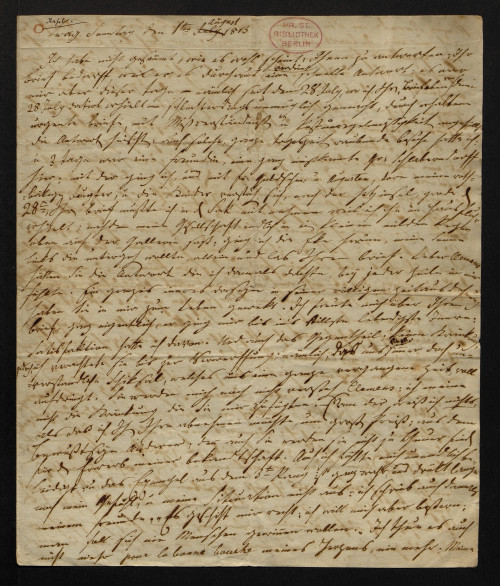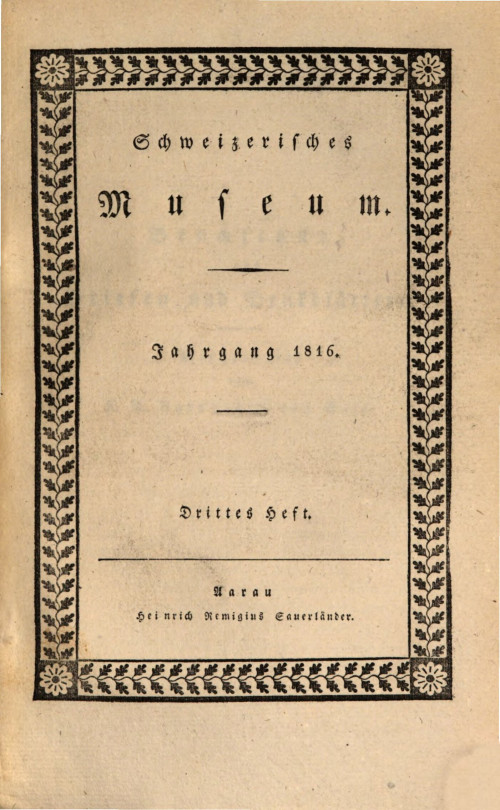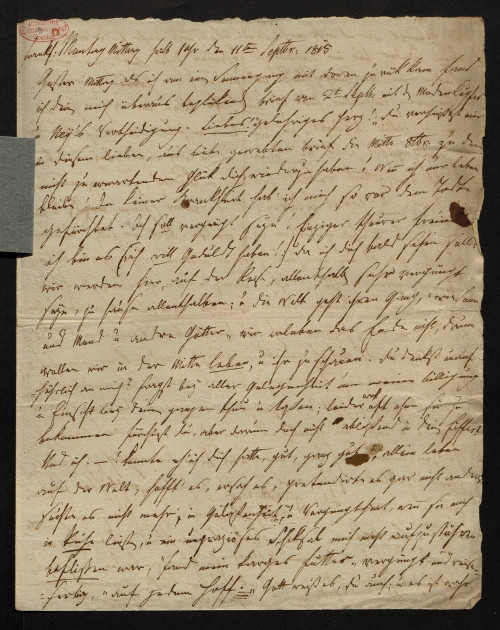2nd chapter: Rahel Levin Varnhagen’s Intimate Writing
Throughout her life, Rahel Levin Varnhagen did her best, as an educated Jewish woman, to assimilate into Christian society. Her efforts are reflected in her close ties to non-Jewish individuals of rank and distinction. In the summer of 1811, she met the renowned author Clemens Brentano (1778–1842) through her future husband Karl August Varnhagen (1785–1858). Levin Varnhagen and Brentano hit it off and began exchanging letters, but their friendship was poisoned from the start. Levin Varnhagen soon heard that Brentano’s sister Bettina (1785 – 1859), who had married Achim von Arnim (1781–1831) in March 1811, had supposedly called her a “nasty, intrusive Jewess”, and Clemens Brentano started to send letters containing “true insults and abuse”. The prejudices harboured by Clemens Brentano and his sister were part of the growing anti-Jewish sentiment in the middle class in the 1810s. This sentiment also found expression in the “German Table Society”, founded by Achim von Arnim in 1811, which categorically excluded Jews, woman and converts to Christianity. Despite the hostility, Levin Varnhagen was determined to clear up matters with the Brentano siblings. She appealed for mutual reflection in letters and practised “patience”. However, the insults — which Levin Varnhagen had known since her childhood — did not stop. In 1812, Karl August Varnhagen boxed Clemens Brentano’s ears in public, seeking revenge for the vilification of his fiancée. In 1813, Levin Varnhagen broke off all contact with Brentano. In September 1814, she was baptized Antonie Friederike and married the man who, through his love and conviction, wanted to make her forget the humiliations of her past and at the same time desired to feel special in her presence.
Weitere Stationen
-

Rahel Levin Varnhagen (1771 – 1833), Brief an Clemens Brentano (1778–1842) in Wien, Prag, 1. August 1813
1 Einzel-, 1 Doppelseite (faksimiliert), 25,5 x 21 cm Sammlung Varnhagen, Biblioteka Jagiellońska, Krakau
-

Rahel Levin Varnhagen (1771 – 1833) „Bruchstücke aus Briefen und Denkblättern. Mitgetheilt von K. A. Varnhagen von Ense.“ Schweizerisches Museum, Jahrgang 1816, Drittes Heft, Aarau, Heinrich Remigius Sauerländer
Cover, fortfolgend Vorsatztitel und Seiten 354–355, Bayrische Staatsbibliothek (MDZ)
-

Rahel Levin Varnhagen (1771 – 1833), „Tagebuch F“, Nr. 84, 17. Januar 1824
2 Seiten (faksimiliert), 18,5 x 12 cm Sammlung Varnhagen, Biblioteka Jagiellońska, Krakau
-

Rahel Levin Varnhagen (1771 – 1833), Brief an Karl August Varnhagen (1785–1858) in Paris, Frankfurt, 11. September 1815
1 Einzel-, 1 Doppelseite (faksimiliert), 24,5 x 19,5 cm, Sammlung Varnhagen, Biblioteka Jagiellońska, Krakau